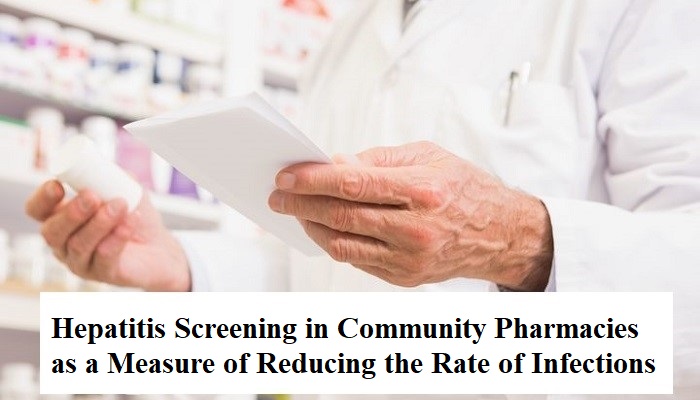“Hepatitis Screening in Community Pharmacies as a Measure of Reducing the Rate of Infections.” This comprehensive journal explores the potential of utilizing community pharmacies for hepatitis B (HBV) and hepatitis C (HCV) screening, aiming to reduce the prevalence and transmission of these infections.
Hepatitis B and C continue to pose significant global health challenges, with an estimated 354 million cases worldwide. Despite advancements in screening, vaccination, and treatment, hepatitis remains a leading cause of morbidity and mortality, claiming approximately 1.1 million lives annually in the United States alone. The study highlights the crucial role of increasing screening access as a measure to identify and treat hepatitis infections early, thereby mitigating the spread and impact of the disease.
Community pharmacies are uniquely positioned to address the gaps in hepatitis screening due to their accessibility and proximity to vulnerable populations. This research investigates the feasibility and efficacy of using community pharmacies as screening centers for HBV and HCV. It also examines whether these settings can help increase the rate of people receiving care and ultimately reduce infection rates.
Key research findings:
Prevalence and Risk Factors: The study provides a detailed analysis of hepatitis B and C prevalence in the United States, noting approximately 2.4 million people living with HCV and 850,000 with HBV. The actual numbers could be higher due to low screening rates. Key risk factors identified include injecting drug use, multiple sex partners, and co-infection with HIV.
Screening Strategies: The Centers for Disease Control and Prevention (CDC) recommends universal screening for HBV and HCV to detect infections early and reduce transmission. Community pharmacies can play a vital role in implementing these strategies by providing point-of-care (POC) testing, which offers rapid results and timely access to treatment.
Role of Community Pharmacies: The research highlights community pharmacies’ potential to offer POC testing, increasing screening uptake and improving linkage to care. Studies have shown that pharmacies are effective in identifying new cases of hepatitis, with patients expressing willingness to undergo screening in these settings due to factors like reduced wait times, accessibility, and privacy.
Challenges and Barriers: While community pharmacies show promise in hepatitis screening, several barriers needs to be addressed, including patient reluctance, pharmacists’ workload, and proper training. Overcoming these challenges is essential to maximize the impact of pharmacy-based screening programs.
Recommendations: The study calls for increased utilization of community pharmacies for hepatitis screening, supported by adequate training for pharmacists and public awareness campaigns to encourage screening uptake. Addressing regulatory and logistical barriers will further enhance the effectiveness of these initiatives.
About the author
Pallav Dave, the author of this research, is a seasoned Regulatory Compliance Analyst based in Kentucky, USA. With extensive experience in healthcare compliance and public health research, Pallav brings a wealth of knowledge and expertise to this groundbreaking study. This research shows his commitment to improving public health outcomes through innovative community-based interventions. Pallav’s work focuses on identifying practical solutions to enhance healthcare access and quality, particularly for underserved populations.
Google scholar journal link: https://jddtonline.info/index.php/jddt/article/view/6478

























